
It will soon be two years since the pandemic disrupted life in the United States, causing some people to reconsider where they live and how they work. One major consequence of the outbreak has been the relocation of people, mostly out of densely populated urban areas to parts of the country where it is much easier to social distance. There are political consequences to population changes. States gaining people may end up with more seats in the House of Representatives. (See how the population of every state has changed in the last 100 years.)
To identify the states that have grown the most since the pandemic, 24/7 Wall St. looked at the 1-year population change from July 1, 2020 to July 1, 2021 according to the US Census Bureau. The average number of new COVID-19 cases in the past seven days comes from 24/7 Wall St.’s own COVID calculator for state totals.
Some states where the population increased during the pandemic were growing anyway as the result of the longtime trend of Americans moving out of Rust Belt states like Michigan and Ohio and Northeastern states like New York and heading to warmer climates (and places with lower taxes) such as Florida, Arizona, and Texas. In addition, some people chose new states where COVID mandates were non-existent or less severe – for instance, South Dakota as well as Florida and Texas.
People also left more densely populated states of New Jersey, Rhode Island, and Maryland for less densely populated locations like Nevada, Idaho, Montana, and Utah. All of these have a population density of fewer than 30 residents per square mile, and all experienced the largest population increases over the period we tracked, growing by more than 1%. (By population, these are currently the largest states in America.)
Click here to see the states that have grown most since the pandemic began
Delaware was an outlier. The nation’s first state is also the fifth-most densely populated, at 512 people per square mile – yet the state experienced a population surge significant enough to push it over the 1 million mark. A possible reason might be an outflow of people fleeing Washington, D.C.
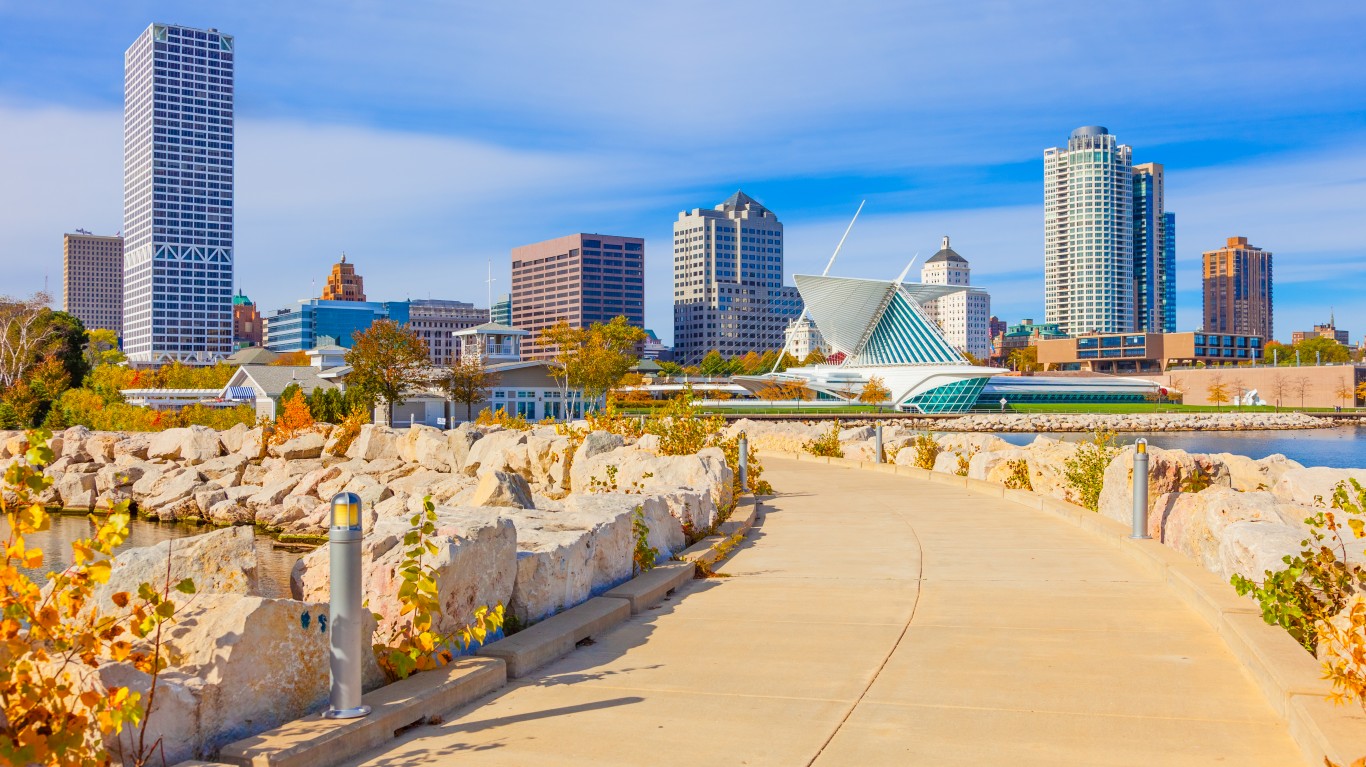
31. Wisconsin
> 1-year change in population: 0.1%
> Population estimate (July 1, 2020) 5,892,323
> Population estimate (July 1, 2021) 5,895,908
> Avg. new COVID cases, past 7 days 6,602.29
[in-text-ad]

30. Oregon
> 1-year change in population: 0.1%
> Population estimate (July 1, 2020) 4,241,544
> Population estimate (July 1, 2021) 4,246,155
> Avg. new COVID cases, past 7 days 6,229.43

29. Nebraska
> 1-year change in population: 0.1%
> Population estimate (July 1, 2020) 1,961,455
> Population estimate (July 1, 2021) 1,963,692
> Avg. new COVID cases, past 7 days 2,263.71

28. Virginia
> 1-year change in population: 0.1%
> Population estimate (July 1, 2020) 8,632,044
> Population estimate (July 1, 2021) 8,642,274
> Avg. new COVID cases, past 7 days 8,530.14
[in-text-ad-2]

27. Kentucky
> 1-year change in population: 0.1%
> Population estimate (July 1, 2020) 4,503,958
> Population estimate (July 1, 2021) 4,509,394
> Avg. new COVID cases, past 7 days 10,786.71

26. Iowa
> 1-year change in population: 0.1%
> Population estimate (July 1, 2020) 3,188,669
> Population estimate (July 1, 2021) 3,193,079
> Avg. new COVID cases, past 7 days 3,684.14
[in-text-ad]

25. Connecticut
> 1-year change in population: 0.1%
> Population estimate (July 1, 2020) 3,600,260
> Population estimate (July 1, 2021) 3,605,597
> Avg. new COVID cases, past 7 days 2,238.43

24. Missouri
> 1-year change in population: 0.2%
> Population estimate (July 1, 2020) 6,154,481
> Population estimate (July 1, 2021) 6,168,187
> Avg. new COVID cases, past 7 days 7,755.00
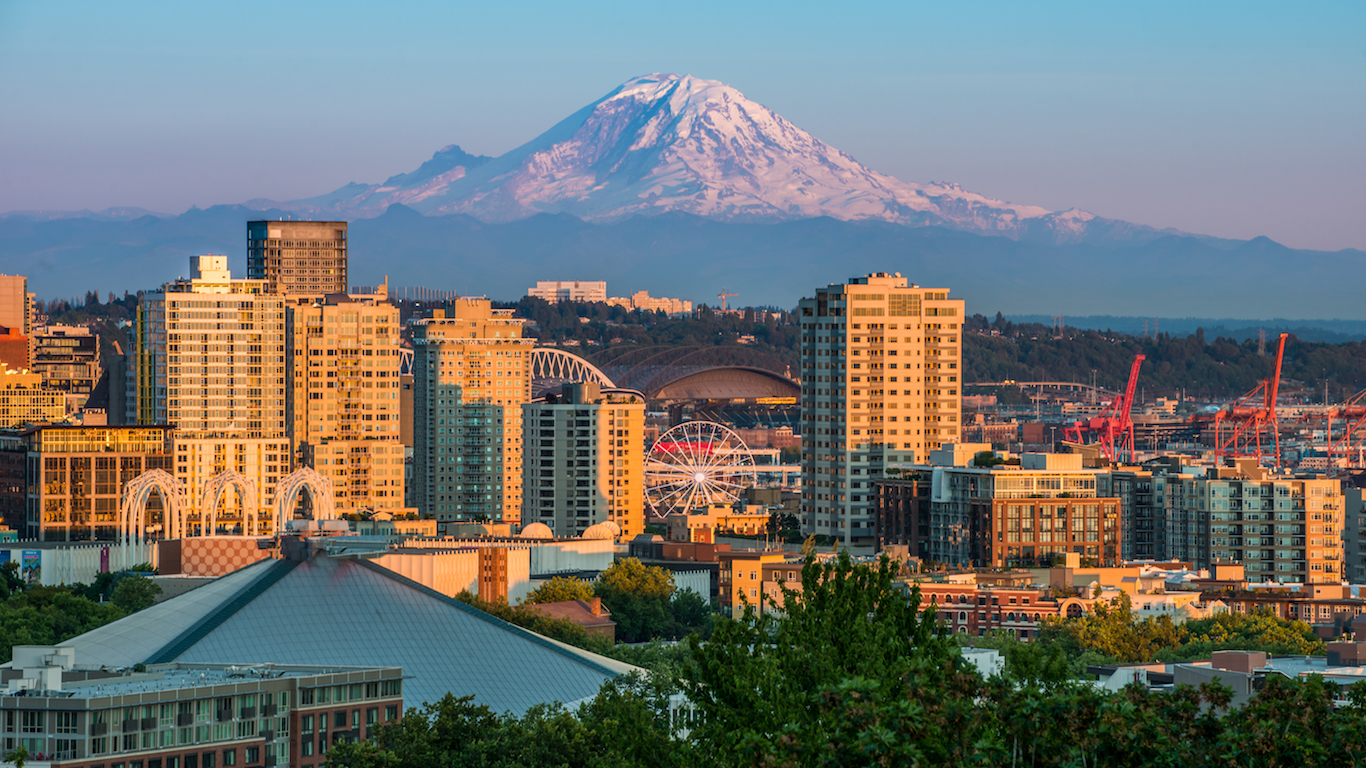
23. Washington
> 1-year change in population: 0.3%
> Population estimate (July 1, 2020) 7,718,785
> Population estimate (July 1, 2021) 7,738,692
> Avg. new COVID cases, past 7 days 19,490.29
[in-text-ad-2]

22. Wyoming
> 1-year change in population: 0.3%
> Population estimate (July 1, 2020) 577,267
> Population estimate (July 1, 2021) 578,803
> Avg. new COVID cases, past 7 days 1,233.14

21. Indiana
> 1-year change in population: 0.3%
> Population estimate (July 1, 2020) 6,785,644
> Population estimate (July 1, 2021) 6,805,985
> Avg. new COVID cases, past 7 days 9,046.00
[in-text-ad]
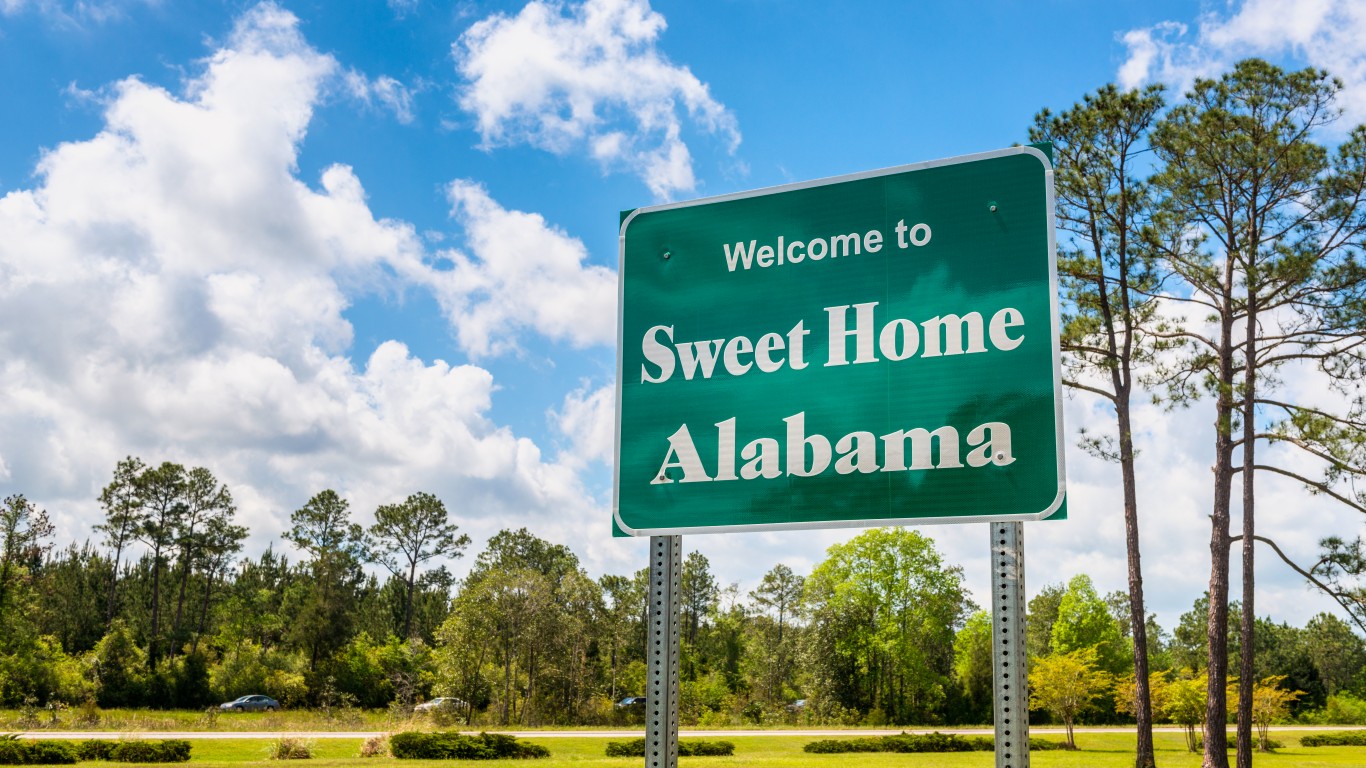
20. Alabama
> 1-year change in population: 0.3%
> Population estimate (July 1, 2020) 5,024,803
> Population estimate (July 1, 2021) 5,039,877
> Avg. new COVID cases, past 7 days 8,848.57

19. Arkansas
> 1-year change in population: 0.5%
> Population estimate (July 1, 2020) 3,012,232
> Population estimate (July 1, 2021) 3,025,891
> Avg. new COVID cases, past 7 days 4,982.57

18. Vermont
> 1-year change in population: 0.5%
> Population estimate (July 1, 2020) 642,495
> Population estimate (July 1, 2021) 645,570
> Avg. new COVID cases, past 7 days 646.57
[in-text-ad-2]
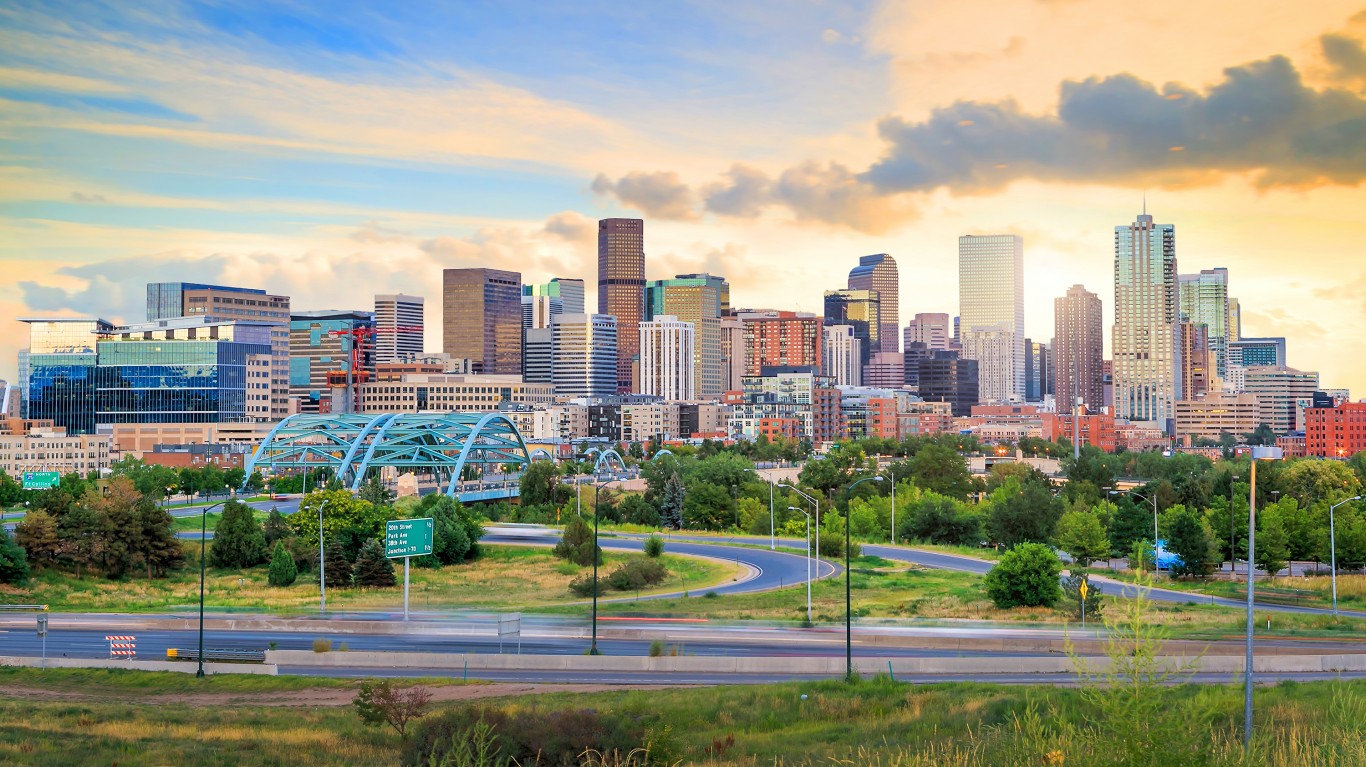
17. Colorado
> 1-year change in population: 0.5%
> Population estimate (July 1, 2020) 5,784,308
> Population estimate (July 1, 2021) 5,812,069
> Avg. new COVID cases, past 7 days 6,424.29

16. Oklahoma
> 1-year change in population: 0.6%
> Population estimate (July 1, 2020) 3,962,031
> Population estimate (July 1, 2021) 3,986,639
> Avg. new COVID cases, past 7 days 8,067.86
[in-text-ad]

15. Georgia
> 1-year change in population: 0.7%
> Population estimate (July 1, 2020) 10,725,800
> Population estimate (July 1, 2021) 10,799,566
> Avg. new COVID cases, past 7 days 13,655.86

14. Maine
> 1-year change in population: 0.7%
> Population estimate (July 1, 2020) 1,362,280
> Population estimate (July 1, 2021) 1,372,247
> Avg. new COVID cases, past 7 days 1,040.71

13. Tennessee
> 1-year change in population: 0.8%
> Population estimate (July 1, 2020) 6,920,119
> Population estimate (July 1, 2021) 6,975,218
> Avg. new COVID cases, past 7 days 13,113.57
[in-text-ad-2]

12. New Hampshire
> 1-year change in population: 0.8%
> Population estimate (July 1, 2020) 1,377,848
> Population estimate (July 1, 2021) 1,388,992
> Avg. new COVID cases, past 7 days 1,673.71

11. North Carolina
> 1-year change in population: 0.9%
> Population estimate (July 1, 2020) 10,457,177
> Population estimate (July 1, 2021) 10,551,162
> Avg. new COVID cases, past 7 days 18,802.86
[in-text-ad]
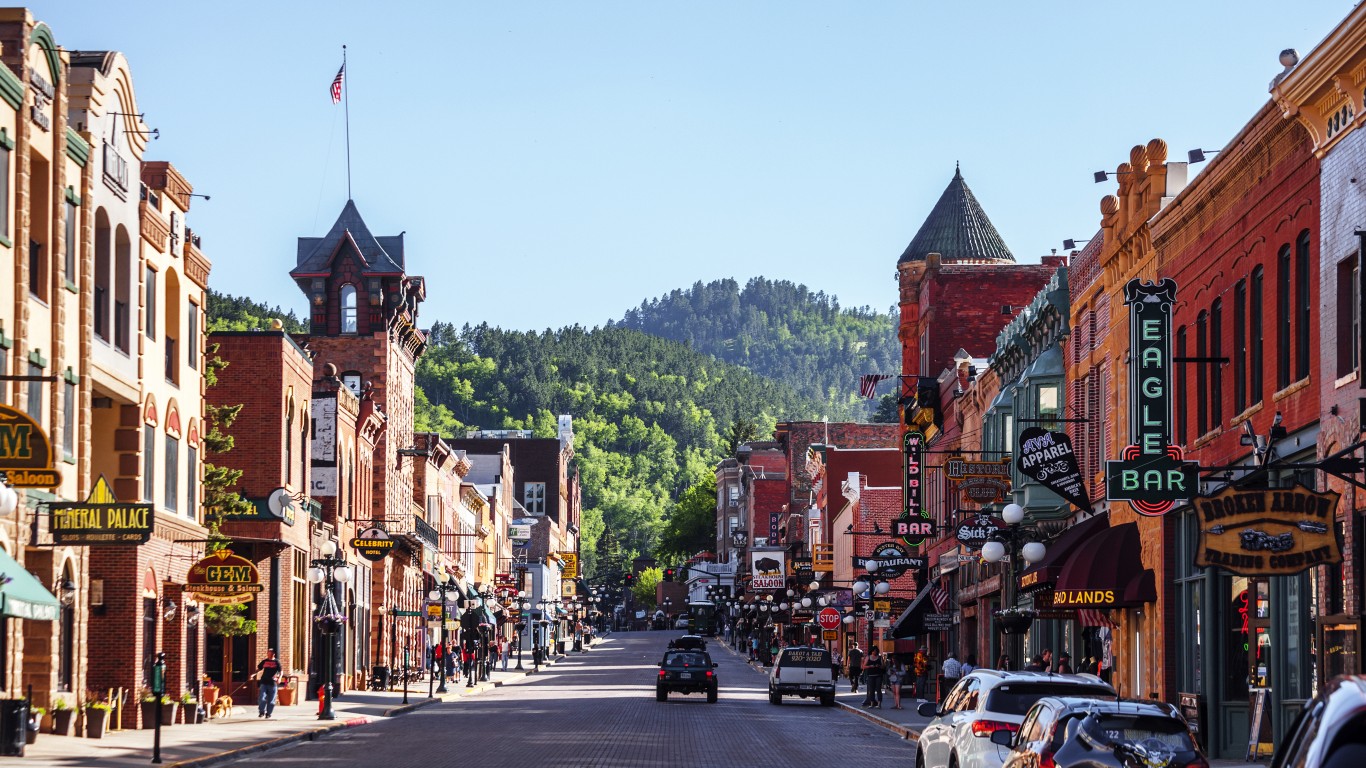
10. South Dakota
> 1-year change in population: 0.9%
> Population estimate (July 1, 2020) 887,099
> Population estimate (July 1, 2021) 895,376
> Avg. new COVID cases, past 7 days 1,124.29
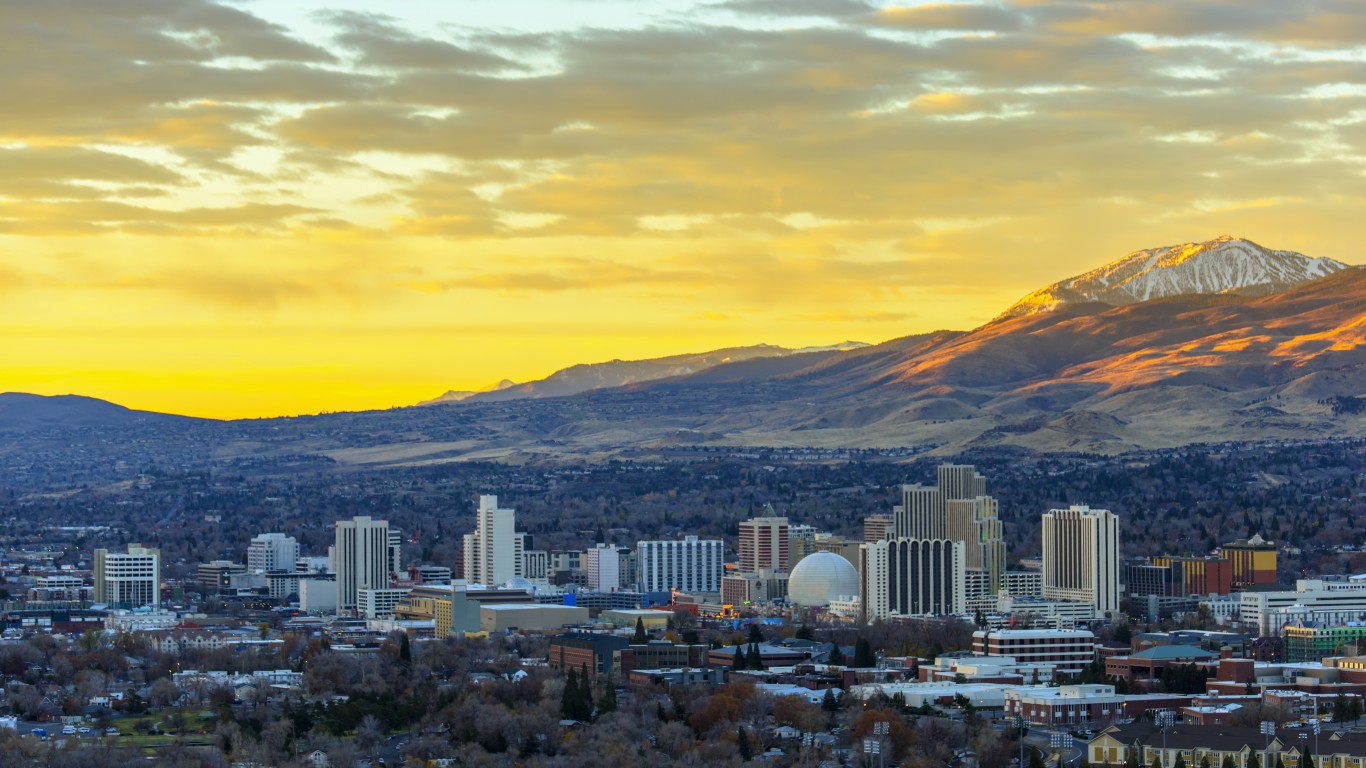
9. Nevada
> 1-year change in population: 1.0%
> Population estimate (July 1, 2020) 3,114,071
> Population estimate (July 1, 2021) 3,143,991
> Avg. new COVID cases, past 7 days 3,793.57
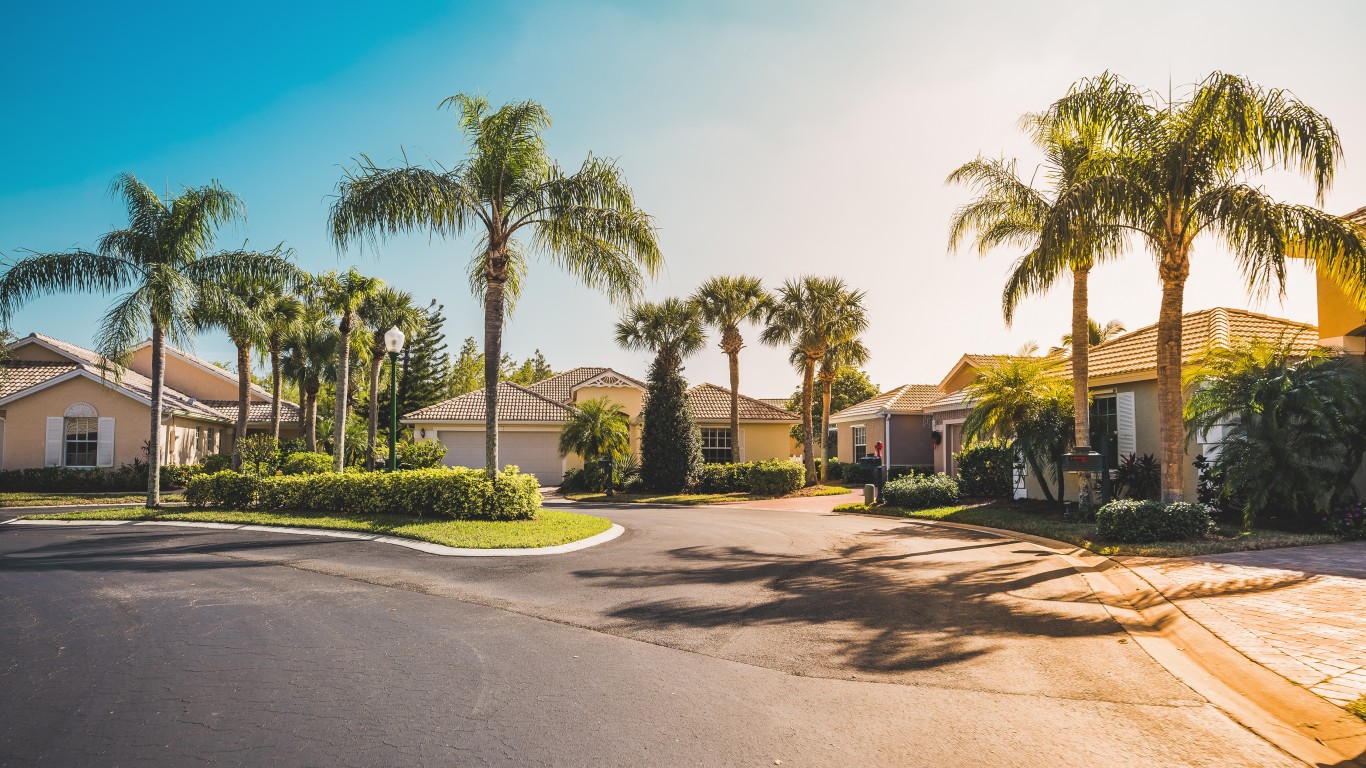
8. Florida
> 1-year change in population: 1.0%
> Population estimate (July 1, 2020) 21,569,932
> Population estimate (July 1, 2021) 21,781,128
> Avg. new COVID cases, past 7 days 24,682.86
[in-text-ad-2]
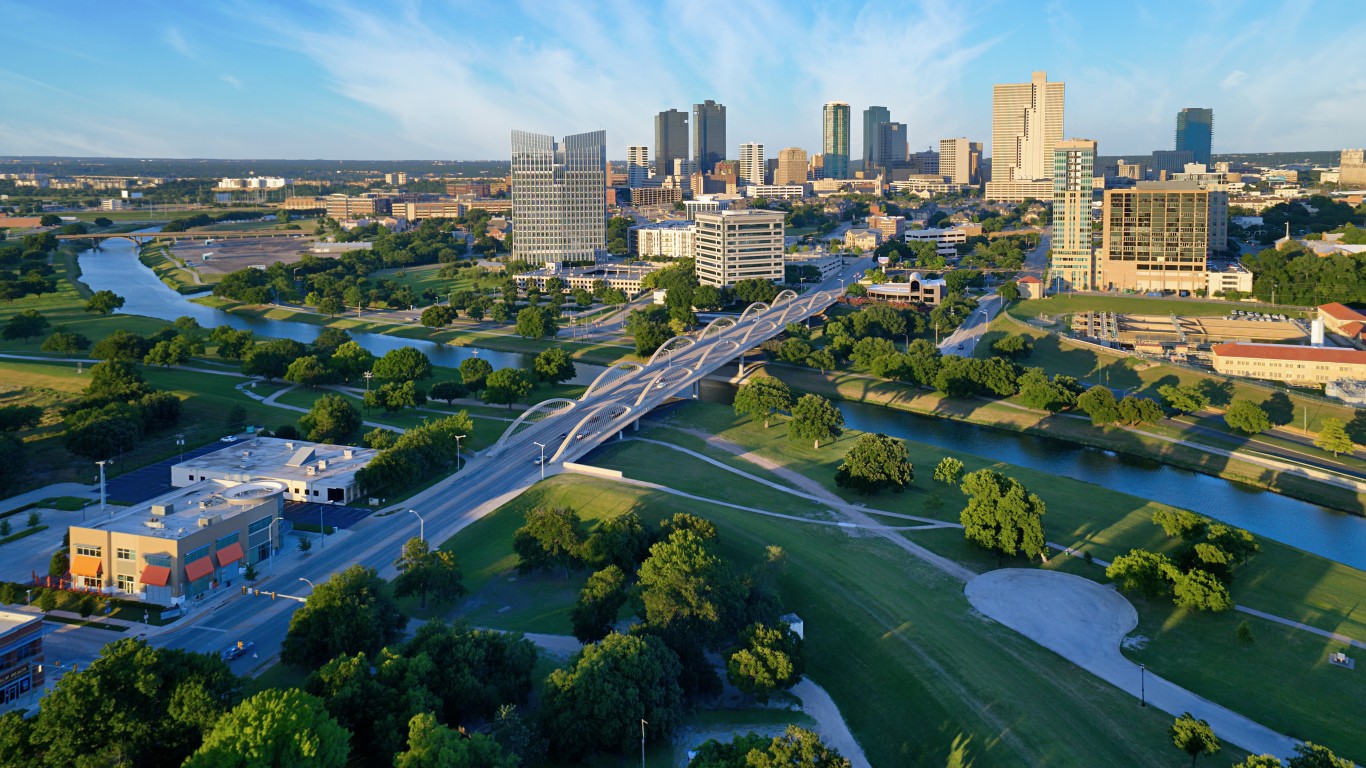
7. Texas
> 1-year change in population: 1.1%
> Population estimate (July 1, 2020) 29,217,653
> Population estimate (July 1, 2021) 29,527,941
> Avg. new COVID cases, past 7 days 35,168.86
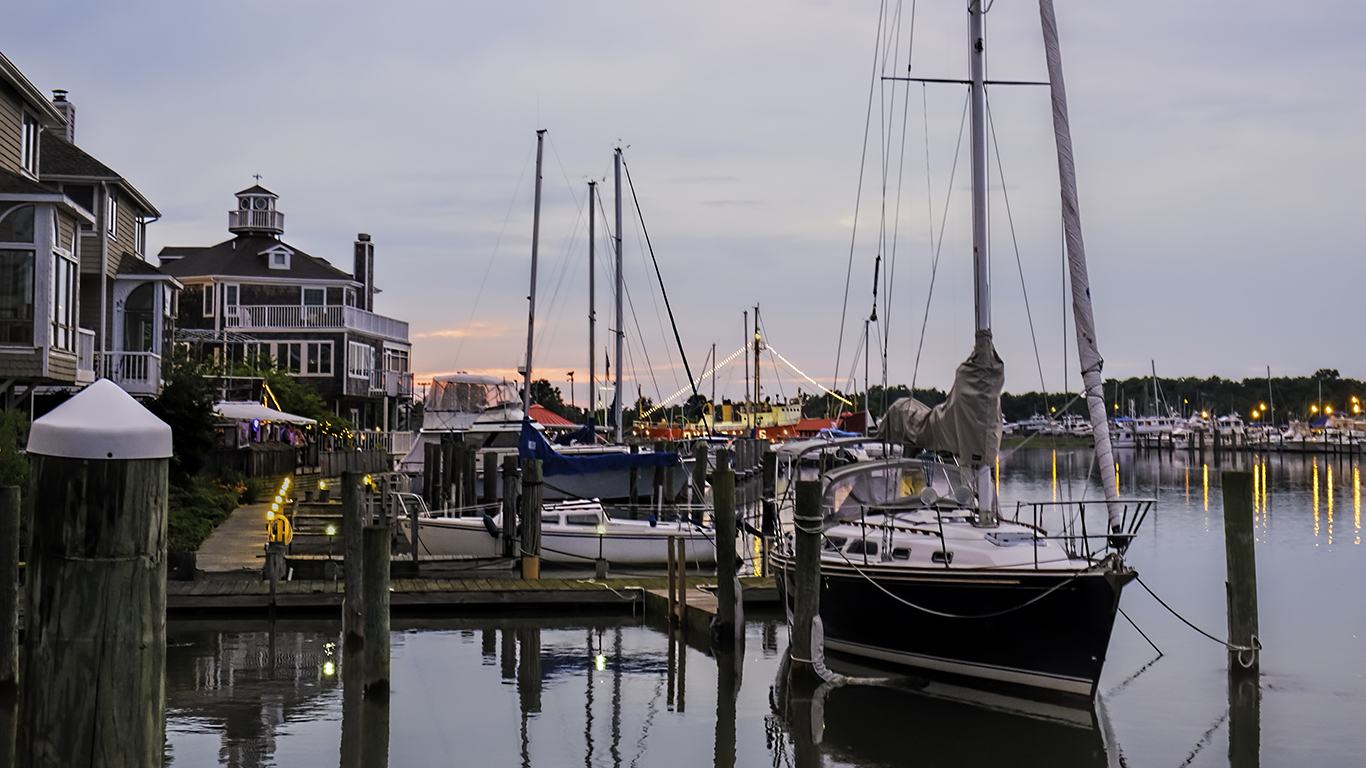
6. Delaware
> 1-year change in population: 1.2%
> Population estimate (July 1, 2020) 991,886
> Population estimate (July 1, 2021) 1,003,384
> Avg. new COVID cases, past 7 days 963.43
[in-text-ad]
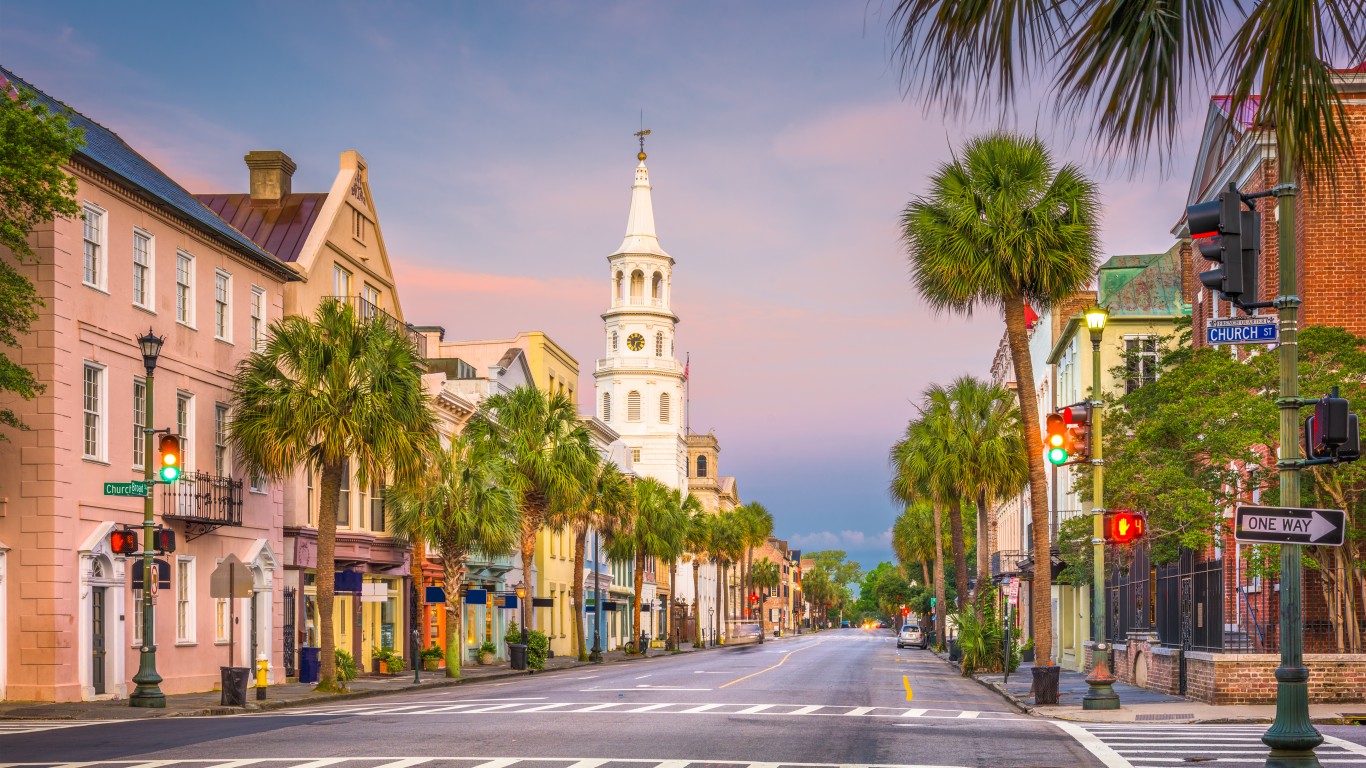
5. South Carolina
> 1-year change in population: 1.2%
> Population estimate (July 1, 2020) 5,130,729
> Population estimate (July 1, 2021) 5,190,705
> Avg. new COVID cases, past 7 days 17,455.71

4. Arizona
> 1-year change in population: 1.4%
> Population estimate (July 1, 2020) 7,177,986
> Population estimate (July 1, 2021) 7,276,316
> Avg. new COVID cases, past 7 days 14,763.14
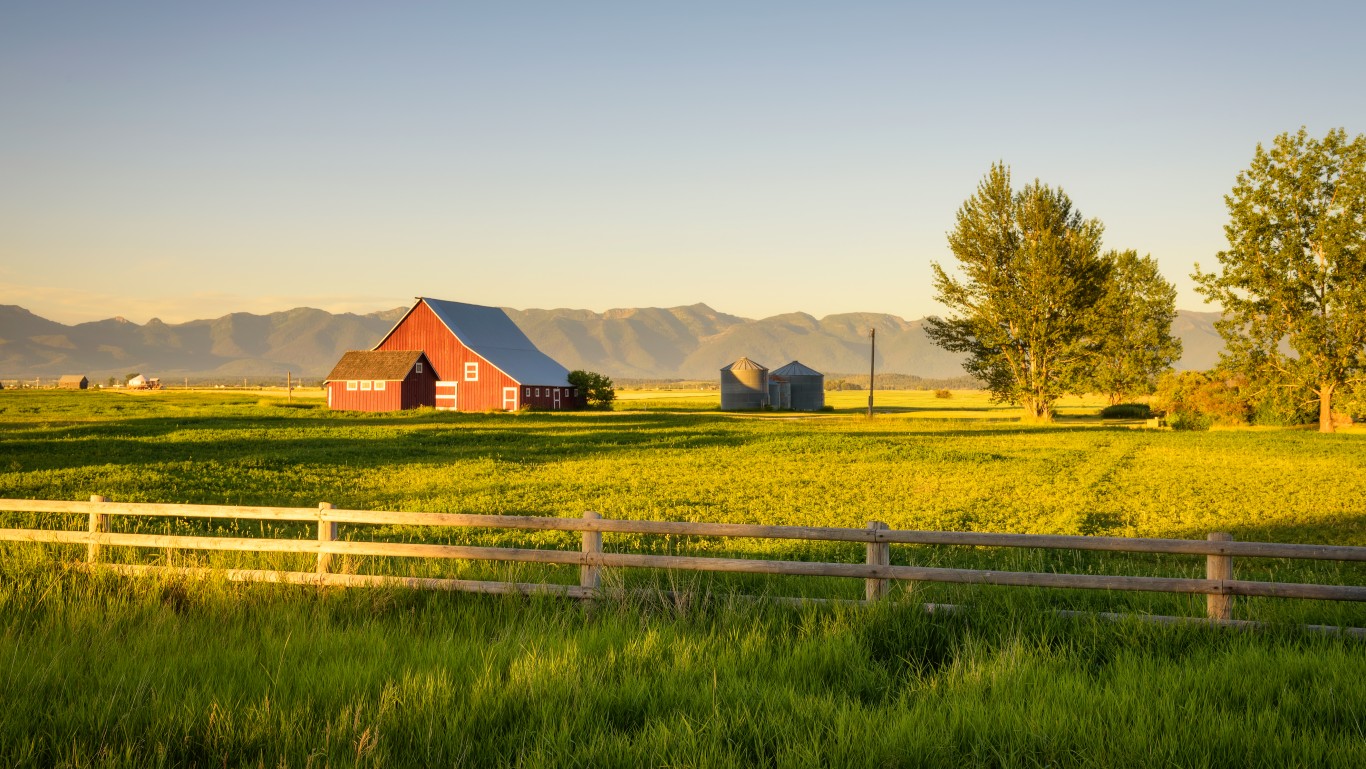
3. Montana
> 1-year change in population: 1.7%
> Population estimate (July 1, 2020) 1,086,193
> Population estimate (July 1, 2021) 1,104,271
> Avg. new COVID cases, past 7 days 2,155.14
[in-text-ad-2]

2. Utah
> 1-year change in population: 1.7%
> Population estimate (July 1, 2020) 3,281,684
> Population estimate (July 1, 2021) 3,337,975
> Avg. new COVID cases, past 7 days 5,366.29

1. Idaho
> 1-year change in population: 2.9%
> Population estimate (July 1, 2020) 1,847,772
> Population estimate (July 1, 2021) 1,900,923
> Avg. new COVID cases, past 7 days 2,749.00
The Average American Has No Idea How Much Money You Can Make Today (Sponsor)
The last few years made people forget how much banks and CD’s can pay. Meanwhile, interest rates have spiked and many can afford to pay you much more, but most are keeping yields low and hoping you won’t notice.
But there is good news. To win qualified customers, some accounts are paying almost 10x the national average! That’s an incredible way to keep your money safe and earn more at the same time. Our top pick for high yield savings accounts includes other benefits as well. You can earn up to 3.80% with a Checking & Savings Account today Sign up and get up to $300 with direct deposit. No account fees. FDIC Insured.
Click here to see how much more you could be earning on your savings today. It takes just a few minutes to open an account to make your money work for you.
Our top pick for high yield savings accounts includes other benefits as well. You can earn up to 4.00% with a Checking & Savings Account from Sofi. Sign up and get up to $300 with direct deposit. No account fees. FDIC Insured.
Thank you for reading! Have some feedback for us?
Contact the 24/7 Wall St. editorial team.
 24/7 Wall St.
24/7 Wall St.

